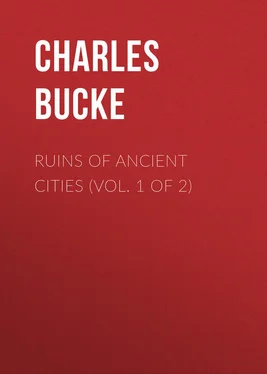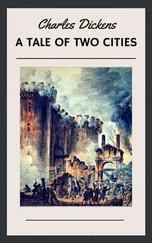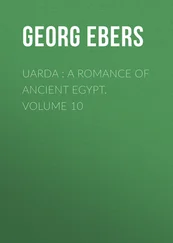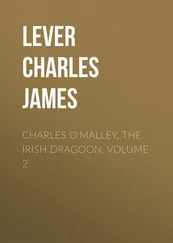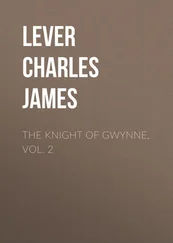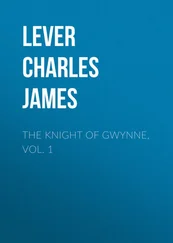Charles Bucke - Ruins of Ancient Cities (Vol. 1 of 2)
Здесь есть возможность читать онлайн «Charles Bucke - Ruins of Ancient Cities (Vol. 1 of 2)» — ознакомительный отрывок электронной книги совершенно бесплатно, а после прочтения отрывка купить полную версию. В некоторых случаях можно слушать аудио, скачать через торрент в формате fb2 и присутствует краткое содержание. Жанр: foreign_antique, foreign_prose, на английском языке. Описание произведения, (предисловие) а так же отзывы посетителей доступны на портале библиотеки ЛибКат.
- Название:Ruins of Ancient Cities (Vol. 1 of 2)
- Автор:
- Жанр:
- Год:неизвестен
- ISBN:нет данных
- Рейтинг книги:4 / 5. Голосов: 1
-
Избранное:Добавить в избранное
- Отзывы:
-
Ваша оценка:
- 80
- 1
- 2
- 3
- 4
- 5
Ruins of Ancient Cities (Vol. 1 of 2): краткое содержание, описание и аннотация
Предлагаем к чтению аннотацию, описание, краткое содержание или предисловие (зависит от того, что написал сам автор книги «Ruins of Ancient Cities (Vol. 1 of 2)»). Если вы не нашли необходимую информацию о книге — напишите в комментариях, мы постараемся отыскать её.
Ruins of Ancient Cities (Vol. 1 of 2) — читать онлайн ознакомительный отрывок
Ниже представлен текст книги, разбитый по страницам. Система сохранения места последней прочитанной страницы, позволяет с удобством читать онлайн бесплатно книгу «Ruins of Ancient Cities (Vol. 1 of 2)», без необходимости каждый раз заново искать на чём Вы остановились. Поставьте закладку, и сможете в любой момент перейти на страницу, на которой закончили чтение.
Интервал:
Закладка:
At the entrance of the bridge there is a small temple, cut in the rock, by the same person that built the bridge. The roof of this temple consists of two large stones. In the temple there is an inscription to the following effect: – " It is reasonable to imagine, that every one, that passes this way, would be glad to know the name of the person that built this bridge and temple; and with what intent they were made, by cutting into this rock of the Tagus, full of the majesty of the Gods, and of Cæsar, and where art showed itself superior to the tough and stubborn matter that resisted her. Know, then, that it was that noble architect Lacer, who built this bridge, which will last as long as the world. Lacer, having finished this noble bridge, made and dedicated this new temple, with sacrifices, to the gods, in hopes of rendering them propitious to him, for having honoured them after this manner. This temple he dedicated to the gods of Rome, and to Cæsar; looking upon himself to have been extremely fortunate, in having been able to make so just and proper a sacrifice. 10 10 Jose Almana.
"
NO. VIII. – ALEXANDRIA
Of the several capitals of Egypt in successive ages 11 11 Browne.
, Thebes, or Diospolis, was the most ancient. Next was Memphis; itself a city of the most remote antiquity. Babylon seems to have been only the capital of a part, retained by the Persians, after Cambyses had subdued Egypt; and was, by all accounts, founded by the Persians. Alexandria succeeded Memphis, and remained the chief city, till the Saracens founded Misr-el-Kahira.
Alexander, in his way to the temple of Jupiter Ammon, observed, opposite to the island of Pharos, a spot which he thought extremely well adapted for the building of a city. He, therefore, set about drawing the plan of one; in doing which he particularly marked out the several places where temples and squares should be erected. The general execution he committed to the architect who had rebuilt the temple of Diana at Ephesus (Dinocrates). This city he called Alexandria, after his own name; and being situated with the Mediterranean on one side, and one of the branches of the Nile on the other, it soon drew all the commerce, both of the east and west. It still remains, and is situate about four days' journey from Cairo. The merchandises were unloaded at Portus Muris 12 12 Myos Hormos.
, a town on the western coast of the Red Sea; whence they were brought upon camels to a town of Thebais, called Copt, and conveyed down the Nile to Alexandria, whither merchants from all parts resorted.
The trade of the East has at all times enriched those who carried it on. Solomon received from one commercial voyage, no less a sum than three millions two hundred and forty thousand pounds 13 13 Four hundred and fifty talents of gold. See 2 Chron. viii. 18. This, we may suppose, was the gross sum received; not the profit.
. Tyre afterwards had the trade. When the Ptolemies, however, had built Berenice, and other ports on the western side of the Red Sea, and fixed their chief mart at Alexandria, that city became the most flourishing of all the cities in the world. "There," says Prideaux, "it continued for many centuries after; and all the traffic which the western parts of the world from that time had with Persia, India, Arabia, and the eastern coasts of Arabia, was wholly carried on through the Red Sea, and the mouth of the Nile, till a way was discovered of sailing to those parts by the Cape of Good Hope."
Alexander was buried 14 14 A. M. 3685. Ant. J. C. 321. Diod. lib. xviii. p. 608, 610.
in the city he had built; and as the sarcophagus in which he was placed has now become an object of great curiosity, by having been taken from the French, at Alexandria, where it was found in the mosque of St. Athanasius, and placed in the British Museum, we shall give (from Rollin) an account of his funeral; for never had any monarch one so magnificent!
Alexander died at Babylon. Aridæus, having been deputed by all the governors and grandees of the kingdom, to take upon himself the care of his obsequies, had employed two years in preparing every thing that could render it the most august funeral that had ever been seen. When all things were ready for the celebration of this mournful ceremonial, orders were given for the procession to begin. This was preceded by a great number of pioneers and other workmen, whose office was to make all the ways practicable, through which the procession was to pass. As soon as these were levelled, the magnificent chariot, the invention and design of which raised as much admiration as the immense riches that glittered all over it, set out from Babylon. The body of the chariot rested upon two alxetrees, that were inserted into four wheels, made after the Persian manner; the naves and spokes of which were covered with gold, and the rounds plated over with iron. The extremities of the axletrees were made of gold, representing the mouths of lions biting a dart. The chariot had four draught-poles, to each of which were harnessed four sets of mules, each set consisting of four of those animals; so that this chariot was drawn by sixty-four mules. The strongest of those creatures, and the largest, were chosen on this occasion. They were adorned with crowns of gold, and collars enriched with precious stones and golden bells. On this chariot was erected a pavilion of entire gold, twelve feet wide, and eighteen in length, supported by columns of the Ionic order, embellished with the leaves of acanthus. The inside was adorned with a blaze of jewels, disposed in the form of shells. The circumference was beautified with a fringe of golden net-work; the threads that composed the texture were an inch in thickness, and to those were fastened large bells, whose sound was heard to a great distance. The external decorations were disposed into four relievos. The first represented Alexander seated in a military chariot, with a splendid sceptre in his hand, and surrounded, on one side, with a troop of Macedonians in arms; and on the other, with an equal number of Persians, armed in their manner. These were preceded by the king's equerries. In the second were seen elephants completely harnessed, with a band of Indians seated on the fore part of their bodies; and on the hinder, another band of Macedonians, armed as in the day of battle. The third exhibited to the view several squadrons of horse ranged in military array. The fourth represented ships preparing for a battle. At the entrance into the pavilion were golden lions, that seemed to guard the passage. The four corners were adorned with statues of gold, representing victories, with trophies of arms in their hands. Under the pavilion was placed a throne of gold of a square form, adorned with the heads of animals, whose necks were encompassed with golden circles a foot and a half in breadth; to these were hung crowns that glittered with the liveliest colours, and such as were carried in procession at the celebration of sacred solemnities. At the foot of the throne was placed the coffin of Alexander, formed of beaten gold, and half filled with aromatic spices and perfumes, as well to exhale an agreeable odour, as for the preservation of the corpse. A pall of purple, wrought with gold, covered the coffin. Between this and the throne the arms of that monarch were disposed in the manner he wore them while living. The outside of the pavilion was likewise covered with purple, flowered with gold. The top ended in a very large crown of the same metal, which seemed to be a composition of olive-branches. The rays of the sun which darted on this diadem, in conjunction with the motion of the chariot, caused it to emit a kind of rays like those of lightning. It may easily be imagined, that, in so long a procession, the motion of a chariot, loaded like this, would be liable to great inconveniences. In order, therefore, that the pavilion, with all its appendages, might, when the chariot moved in any uneven ways, constantly continue in the same situation, notwithstanding the inequality of the ground, and the shocks that would frequently be unavoidable, a cylinder was raised from the middle of each axle-tree, to support the pavilion; by which expedient the whole machine was preserved steady. The chariot was followed by the royal guards, all in arms, and magnificently arrayed. The multitude of spectators of this solemnity is hardly credible; but they were drawn together as well by their veneration for the memory of Alexander, as by the magnificence of this funeral pomp, which had never been equalled in the world. There was a current prediction, that the place where Alexander should be interred, would be rendered the most happy and flourishing part of the whole earth. The governors contested with each other, for the disposal of a body that was to be attended with such a glorious prerogative. The affection, Perdiccas entertained for his country, made him desirous that the corpse should be conveyed to Æge, in Macedonia, where the remains of its kings were usually deposited. Other places were likewise proposed, but the preference was given to Egypt. Ptolemy, who had such extraordinary and recent obligations to the king of Macedonia, was determined to signalise his gratitude on this occasion. He accordingly set out with a numerous guard of his best troops, in order to meet the procession, and advanced as far as Syria. When he had joined the attendants on the funeral, he prevented them from interring the corpse in the temple of Jupiter Ammon, as they had proposed. It was therefore deposited, first, in the city of Memphis, and from thence was conveyed to Alexandria. Ptolemy raised a magnificent temple to the memory of this monarch, and rendered him all the honours which were usually paid to demi-gods and heroes by Pagan antiquity.
Читать дальшеИнтервал:
Закладка:
Похожие книги на «Ruins of Ancient Cities (Vol. 1 of 2)»
Представляем Вашему вниманию похожие книги на «Ruins of Ancient Cities (Vol. 1 of 2)» списком для выбора. Мы отобрали схожую по названию и смыслу литературу в надежде предоставить читателям больше вариантов отыскать новые, интересные, ещё непрочитанные произведения.
Обсуждение, отзывы о книге «Ruins of Ancient Cities (Vol. 1 of 2)» и просто собственные мнения читателей. Оставьте ваши комментарии, напишите, что Вы думаете о произведении, его смысле или главных героях. Укажите что конкретно понравилось, а что нет, и почему Вы так считаете.
